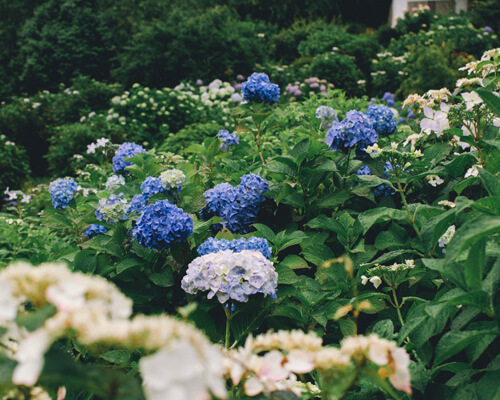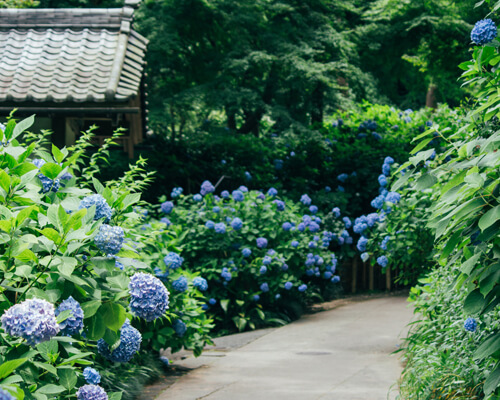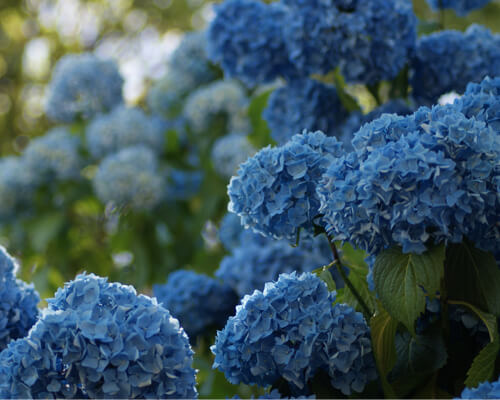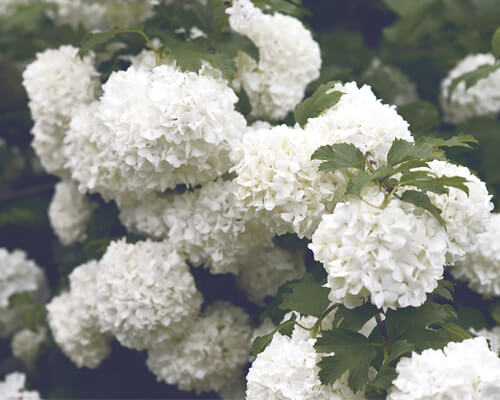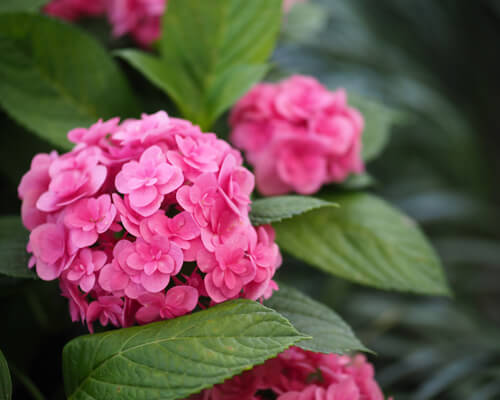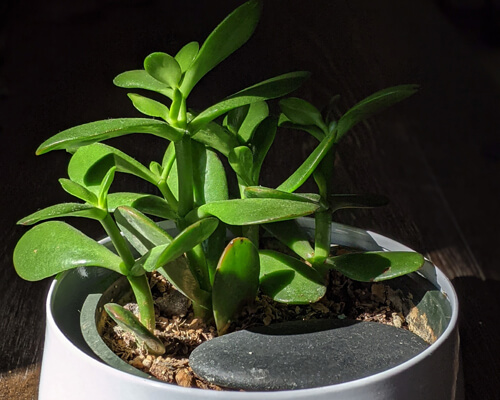How do You Get an Orchid to Bloom Again?

Have you ever gazed in awe at the vibrant beauty of an orchid, and wondered how to get an orchid to bloom again?
Cultivating orchid can be both rewarding and challenging. If you’ve got a droopy orchid that hasn’t bloomed in a while, don’t give up.
With proper consideration of care requirements, it is possible to get your orchid blooming again with spectacular results.
To help make things easier for you we’ve compiled some tips on how to create ideal conditions for your orchids’ needs.
How often do orchids bloom
Orchids typically bloom once a year. However, this is not always the case.
Depending on the species and environment, they can bloom more than once a year.
For instance, some orchid species are photoperiodic and need longer days to produce flowers.
So if you place them somewhere with naturally long summer days, such as in a greenhouse, they may flower multiple times throughout the season.
In optimal conditions, many orchid varieties will bloom for several months at a time.
Some of these varieties might even flower twice or thrice within a year’s cycle depending on the variety and its environment.
On average though, most types of orchids tend to bloom just once per year but with an impressive lifespan, some can live up to seven years.
There is no shortage of blooming opportunities for those who keep these beauties around for an extended period of time.
Also when an orchid does flower it usually remains in bloom for six to ten weeks.
Making them quite resilient plants in comparison to other flowering plants that may only last a couple of weeks at most.
When do orchids rebloom
Orchids typically rebloom in the fall season, usually from late September to early November.
The exact timing can vary depending on your orchid’s type and location.
Since orchids prefer warm temperatures, those that are grown outdoors may blooms earlier than those grown indoors.
Additionally, orchids that are grown in warmer climates (like Florida) will bloom earlier than those grown in cooler climates (like New England).
When an orchid enters its vegetative stage, it will stop flowering for several months before it begins producing new flowers.
During this period, many people mistakenly assume that their orchid has died. However, it is simply resting before a new growth cycle begins.
The key to successful reblooming is to provide your orchid with the right environment during its dormancy period.
To encourage your orchid to rebloom, you should provide it with plenty of bright but indirect light and consistent watering (but not too much).
Fertilizing with a balanced fertilizer twice a month is also beneficial for the overall health of the plant and encourages flower production.
In addition, you can try gently shaking the stem of the plant twice per week as this helps stimulate flower bud formation.
With proper care and attention during its dormancy period, your orchid should begin flowering again in no time.
Reblooming will typically occur around autumn when sunlight levels decrease and temperatures become more mild.
However, some types of orchids may even rebloom during winter if certain conditions are met.
Regardless of what season it is, by providing adequate light and other essentials like water and nutrients, you can ensure that your beloved orchid continues to bloom season after season.
How long does it take for orchid to rebloom
On average, it takes an orchid about 9-13 months to rebloom.
This length can vary depending on the species of orchid, the environment in which it’s grown, and how well the plant is cared for.
Your orchid can get rebloom sooner with proper attention and care.
This includes providing plenty of light and water, using appropriate fertilizer, and increasing humidity levels around the plant.
Additionally, cutting back dead stems and leaves can help stimulate healthy growth and blooming.
As a general guideline for reblooming an orchid, it’s important to take into account that not all species of orchids have the same needs.
So it’s best to research your particular type of orchid before attempting any methods of encouraging reblooming.
Moreover, patience is key, even with ideal conditions and dedicated care, some varieties may take longer than others to produce another round of blooms.
How to make an orchid rebloom
Step 1: Cut away the old stem.
Cut away the old stem of your orchid using clean, sharp scissors or a knife.
Make sure to remove all dead and unhealthy parts of the plant, such as browning leaves and stems.
Consider removing any additional foliage that may prevent light from reaching the flowering area.
When cutting, make sure to leave at least two healthy nodes (the bump in a stem where new growth will come from) on each piece you are removing.
Step 2: Continue watering.
After pruning back an orchid’s stem, it’s important to keep up with regular watering habits.
Orchids like to be kept moist but not soggy, so check for moisture every few days and water when the top inch of soil feels dry.
Water from below, pour into a saucer beneath the pot, and avoid getting water on the foliage of your orchid.
Step 3: Fertilize when necessary.
To encourage reblooming, feed your orchid with a high-potassium liquid fertilizer once every two weeks during the spring and summer months.
Some growers will also add a light dose of fish emulsion fertilizer in between regular feedings.
Make sure to always follow label instructions when mixing any type of fertilizer.
Step 4: Find the best spot.
When it comes time for an orchid to bloom again, finding the right spot is important.
Orchids prefer warm temperatures between 60°F and 85°F during their growing season and slightly cooler temps during winter months (between 55°F and 70°F).
Orchids also need plenty of bright light but no direct sunlight.
Aim for the filtered sun like what you’d find near an east-facing window in wintertime that gets more direct sun in spring and summer months when days are longer.
Step 5: Repot when needed.
If your orchid begins looking unhealthy due to its current potting medium becoming compacted and losing its ability to drain properly.
It may be time for repotting. Especially if you haven’t done so in 2 years or longer.
Repot with fresh bark mix made specifically for epiphytic plants such as orchids.
Make sure not to bury too deeply by leaving one inch from the soil line down on all sides (with the exception being if leaf growth is too close).
Then follow regular watering practices afterward plus add additional fertilizer if needed according to label directions.
Step 6: Have patience.
Reblooming can take some time, usually up to two years. But if all goes well you should start seeing new flowers soon enough.
Be patient as each rebloom cycle takes its path depending on the conditions involved.
One more thing you can do is gently shake branches a few times per week while talking quietly.
This helps distribute pollen within flower spikes while also providing necessary stimulation that helps increase the chances further future blooms will occur.
How many times can you rebloom an orchid
Orchids can rebloom many times with the right care and proper procedures.
Generally, these plants can be rebloomed every three to six months with optimized cultivation techniques.
By providing the right conditions, such as plenty of light, humidity and water, as well as fertilizer and a balanced temperature range, an orchid can flower again several times a year.
Different species of orchids bloom at different rates, depending on how frequently they need to rest.
So it’s important to take note of that when crafting your routine for reblooming them.
Also, cutting off any dead flowers from the stem will help the plant gather more energy for flowering again.
With all of this in mind, you can expect your orchid to potentially bloom up to four times a year if you provide it with the best possible environment for growth and blooming.
Do orchids reflower on the same stem
Depending on the type of orchid, some will reflower from the same stem and others will not.
The most widely available type of orchid that does reflower from the same stem is known as the Phalaenopsis, commonly referred to as a ‘moth orchid’.
This particular species is distinct due to its ability to produce multiple blooms on a single flower stalk.
It means that if you are lucky enough to acquire a Phalaenopsis orchid, it can potentially bloom several times a year provided that it is cared for properly.
Other types of orchids may also bloom again, but they do so from new flower stalks which develop after the existing one has been cut off at its base.
To encourage repeat blooming with these types of plants, it’s important to provide them with adequate light and humidity and fertilize them regularly throughout the growing season.
Additionally, be aware that some varieties of orchids may require eventual repotting for them to remain healthy and continue flowering.
Should you cut the flower spike off an orchid
To cut off the flower spike (stem) or not? This depend on the particulars of the specific flower.
Generally speaking, cutting off the stem will encourage further flowering and give the plant a more aesthetic look.
On the flip side, leaving it on can result in smaller flowers and an ungainly stem.
If you’re looking for a quick way to get more blooms from your orchid, then cutting off the stem is certainly worth considering.
However, it’s important to keep in mind that cutting away the flower spike can prevent future blooming.
This is because when a flower fades, its spike contains essential nutrients that help your orchid build up energy for future blooms.
So if you choose to cut away this spike, you could be sacrificing future blooms and ultimately stunting your orchid’s growth.
Moreover, some varieties of orchids may not respond positively to having their spikes removed.
They are naturally designed to produce even better results when allowed to remain intact after flowering.
It’s a good idea to do research on your particular variety before performing any drastic pruning measures like removing the flower spike.
In short, there are both pros and cons associated with cutting off an orchid’s flower spike.
What works best for one plant may have disastrous effects on another.
Ultimately, you should assess each situation individually and make a decision based on what you think is best for your specific bloomer.
How do you tell the difference between an orchid root and Spike
One of the most reliable ways to tell the difference between an orchid root and a spike is by looking at the shape of the tip.
Orchid flower spikes have a flatter, mitten-shaped tip that is usually greener than their root counterparts.
The top of the spike will stay green along its full length as it continues to grow.
Additionally, roots are thicker and longer than flower spikes.
When compared side-by-side, you should also be able to see that the flower spike has more nodes (or bumps) up and down its length than a root does.
Another way to differentiate between a root and a Spike is how they appear over time.
Roots will typically remain fairly constant in size, while Spikes will continue to grow steadily until it blooms into flowers.
In some cases, you may even be able to observe new buds forming on the Spike before its blooms.
To make an accurate determination, you must observe your orchid’s growth over several weeks or months.
Paying careful attention to changes in color, shape, and size along each section of the stem.
Taking notes on these observations can help you track growth patterns and determine if what you are seeing is a root or a Spike in its early stages.
Why is my orchid growing leaves and roots but no flowers
If your orchid is growing leaves and roots but not producing flowers, there are a few possible reasons for this.
The most common cause is that your orchid does not have enough light to encourage flowering.
Orchids, particularly Phalaenopsis and Paphiopedilum, need bright light in order to bloom.
If your orchid is placed in a spot where it receives only filtered sunlight (for instance on a windowsill), this may not be enough for all varieties of orchids to set buds.
Consider providing additional lighting sources such as fluorescent lights or LED growth lights kept close to the plants during their bloom cycle.
Other reasons why an orchid may not be blooming include incorrect watering, temperature fluctuations, and insufficient nutrients in the soil.
Be sure that you’re providing adequate water and humidity for your plant.
Many types of orchids require regular misting, while others will not tolerate it at all.
Make sure that temperatures remain constant and do not drop below 55 degrees Fahrenheit (13 degrees Celsius).
Finally, check if your soil needs additional nutrients.
Some substrates can lose their nutritional content over time.
So fertilizing once a week with orchid food during the blooming season can help ensure that your plant has what it needs to flower.
Conclusion
As above, getting an orchid to bloom again takes perseverance, patience, and knowledge.
Without proper care for your orchid, it won’t flower as expected as identifying and correcting any deficiencies might take longer than you expect.
However, with just a few tweaks in your plant care routine, you could very well be rewarded with more frequent blooms.
Keeping up with regular maintenance. Such as trimming dead blooms, adjusting the potting medium, and fertilizer, and providing the right light conditions.
All these should go a long way toward ensuring that those beautiful fronds will keep reappearing for years to come.

